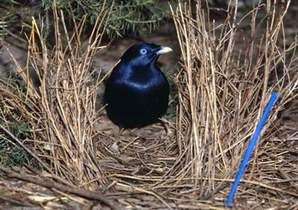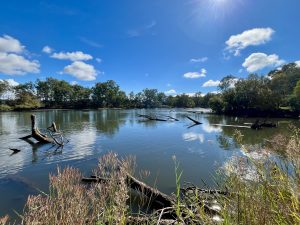A Lavington resident and keen observer has reported seeing Satin Bowerbirds in Heathwood Park this summer; testament to the bush restoration work which has been underway for the past decade.
Satin Bowerbirds are probably the most well-known of all the bowerbirds in Australia, due to both the beautiful sheen on the plumage of the mature male birds, and their habit of building intricate bowers to attract females.
These beautiful birds live at the edges of drier forests, moving into open woodlands to forage for fruit, leaves and insects in autumn and winter. Come spring, they collect together in small groups, inhabiting the same territory year after year. Female and younger birds are varying shades of green, changing as they mature.
Satin Bowerbirds feed on fruits, flowers, leaves, nectar and seeds throughout the year and are particularly fond of fresh green plant growth. During spring and summer – breeding season – they also eat a large number of insects.
The male Satin Bowerbird is known for building a neat bower of sticks to attract females, collecting blue objects such as parrot feathers, flowers, clothes pegs, drinking straws and bottle tops to decorate it. Each mature male bird protects and tends his own bower throughout the year. Bowers are not nests. The female Satin Bowerbird builds a bowl-shaped nest high up in the crown of a tree or clump of mistletoe and she fiercely defends this against predators while she broods the eggs and feeds the young.
Bowerbirds need all of the bush layers from mature trees down to grasses, shrubs and groundcovers to feed, nest and breed, so this sighting is indeed a testament to the worth of the care given to this park. The Friends of Bungambrawartha Creek, Albury City and Parklands rangers have been chipping away at the environmental weeds in the park and replacing them with native species to restore the natural bush habitat of the area, starting with the first plantings in 2003.






